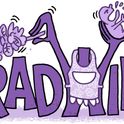What the world needs—and of course by "the world" I mean my diminutive sector of it—is a movement along the lines of the real ale lobby's successful agitation against keg beer, to counteract another insipid gassy product flooding the marketplace. I'm talking about a campaign for real blurbs.
A draught blurb doesn't spoil the reader's appetite by giving too much away, and it reproduces in its malty-hoppy tone something of the book itself. A keg blurb summarises plot, whether baldly or fancily, and scatters a few standard epithets around—the usual suspects being "funny," "moving," "unforgettable." The teaser (draught) is being driven out by the spoiler (keg), like the red squirrel being ousted by the grey.
The larger pattern in culture is of people apparently wanting to know in advance exactly what they're going to get (hence the mystifying popularity of films whose titles end in a number). Occasionally there is some redeeming flamboyance involved—when a film is called Snakes on a Plane, then you will know to avoid it if what you want is a film about slugs on a bus. But I can't help thinking that Joyce, publishing Ulysses in the current cultural climate, would come under pressure to call it Blooming June. As for In Search of Lost Time, perhaps it would become The Teacake That Changed The World Forever.
My DVD of Sunset Boulevard warns me that it contains "self-harm references" (presumably Joe Gillis says, "I could have kicked myself for getting mixed up with that crazy dame"). The poster for Kathryn Bigelow's K-19: The Widowmaker promised "mild claustrophobic terror," which is hardly surprising since the film is set on a submarine—it's like the fabled packet of almonds with the warning: "this product contains nuts."
The decline in the film trailer parallels the decline of the blurb. Nowadays a trailer will tell you most of what happens in the film. I could give you a fair summary of Sister Act without ever having seen it, thanks to an unforgivably explicit trailer: Whoopi Goldberg plays a Las Vegas entertainer who sees her criminal boyfriend (Harvey Keitel) killed. She hides out in a nunnery, where her feistiness and love of pop music at first antagonise and then win over not only her fellow nuns but the mother superior (Maggie Smith) and even the Pope when he pays a visit. How much of the film can be left? I don't know and I never will, because the trailer killed my appetite.
It wasn't always like this. At its best the trailer was a minor art form. Have a look (it's on YouTube) at Hitchcock's playful trailers for The Birds and especially Psycho, where he takes you round the Bates motel and the Bates house, describing incidents perfectly accurately but giving nothing away. The last trailer I saw that could claim to be in that tradition was for Jurassic Park, which showed no footage from the actual film, but instead featured the discovery in a mine of a sequence of prehistoric amber with mosquitos trapped inside, from which dinosaur DNA could in theory be extracted.
The most elegant blurb in literary history must be the one for Nabokov's Ada: "An ardent childhood romance develops in a series of fascinating scenes between Van and pretty Ada, a truly unusual gamine. That the relationship is not simply dangerous cousinage, but possesses an aspect prohibited by law, is hinted in the very first pages… the story proceeds at a spanking pace… Not the least adornment of the chronicle is the delicacy of pictorial detail: a latticed gallery; a painted ceiling; a pretty plaything stranded among the forget-me-nots of a brook; butterflies and butterfly orchids in the margin of the romance; a misty view described from marble steps; a doe at gaze in the ancestral park; and much, much more." There was a unique satisfaction in coming to the end of the novel and finding that these same lines actually constitute its final passages, in a sort of Möbius strip of graceful self-advertisement.
The contemporary master of the blurb is Alasdair Gray, who has more than once offered two for the price of one—the only sort of literary discounting I approve of. His 1992 novel Poor Things had one "Blurb for a High-Class Hardback" ("Alasdair Gray has at last shrugged off his postmodernist label and written an up-to-date 19th-century novel") and another for a "Popular Paperback" ("What strange secret made rich, beautiful, tempestuous Bella Baxter irresistible to the poor Scottish medical student Archie McCandless?"). Even Gray's The Book of Prefaces has an author's blurb and a publisher's too. The author's contains this warning to parents, teachers, librarians and booksellers: "Do not let smart children handle this book. It will help them pass examinations without reading anything else."
Teasing involves a certain amount of risk, but the other approach is invariably self-defeating. When a first novel can be described as "one of the most eagerly awaited literary debuts of 2008" (how can you eagerly await something of which you can have no expectations?), a rhetorical arousal is created which the book can only disappoint. All that happens is that the backlash starts early, perhaps even before the book hits the shops.












